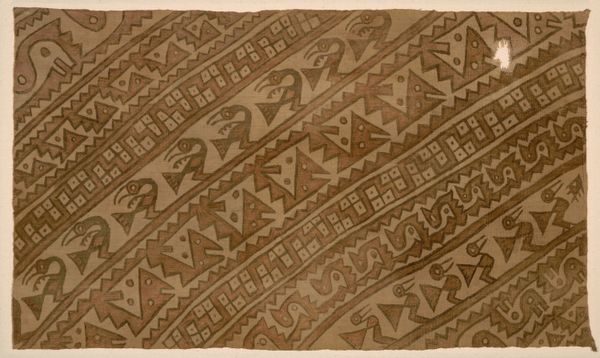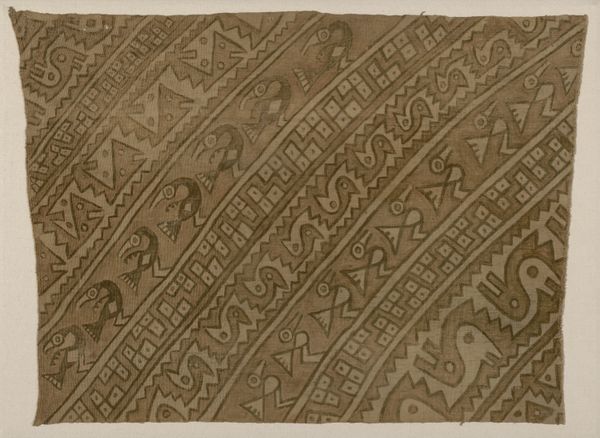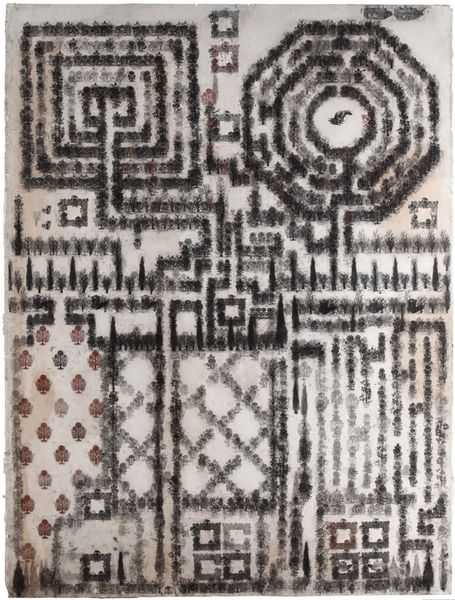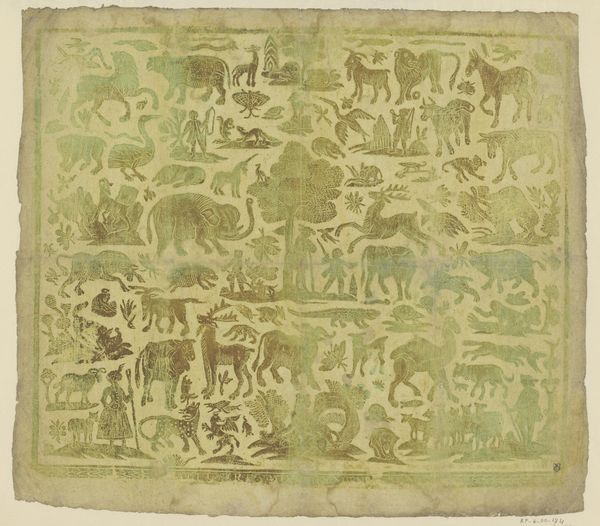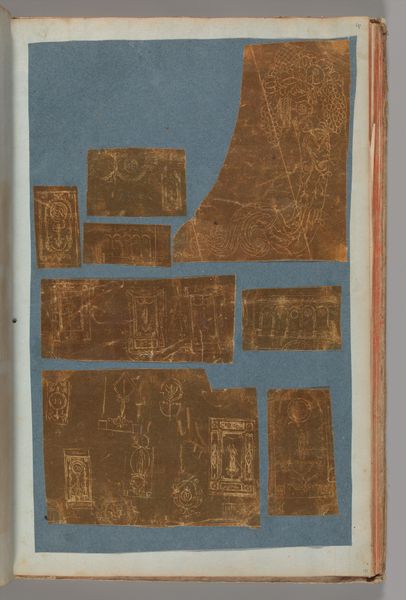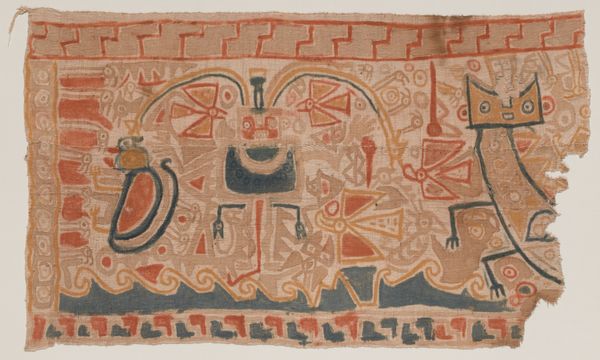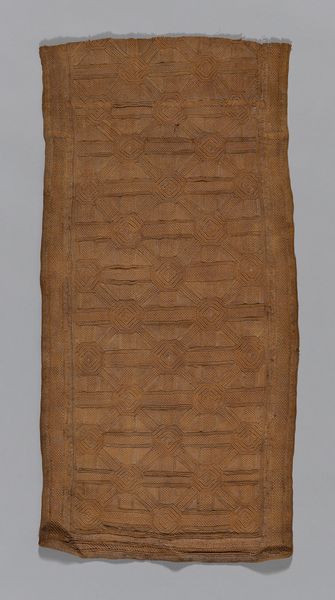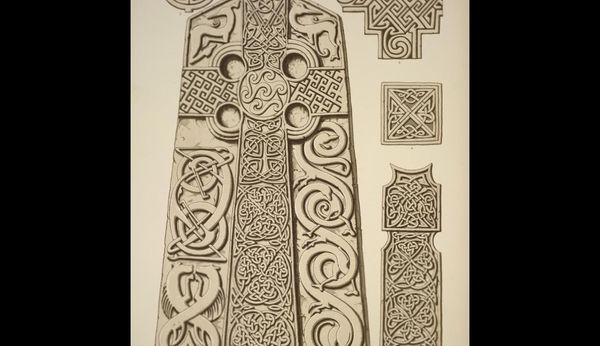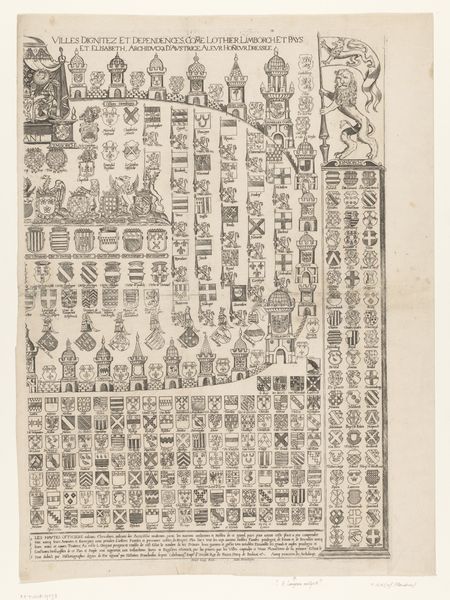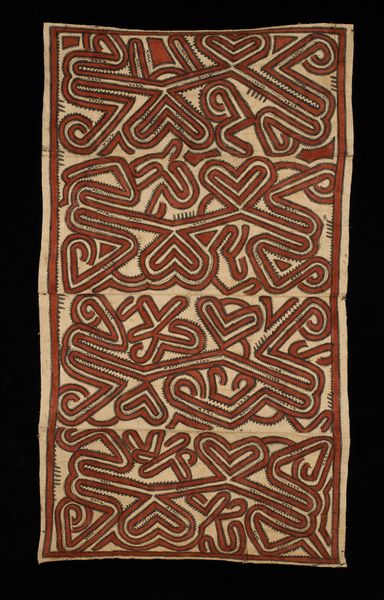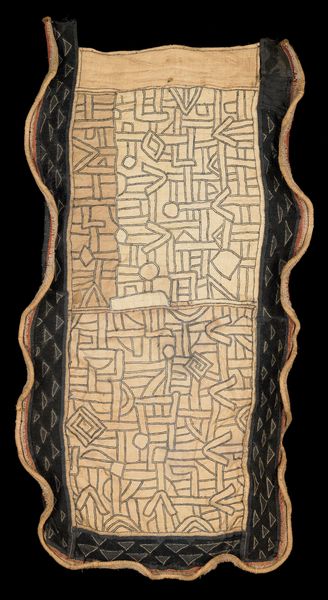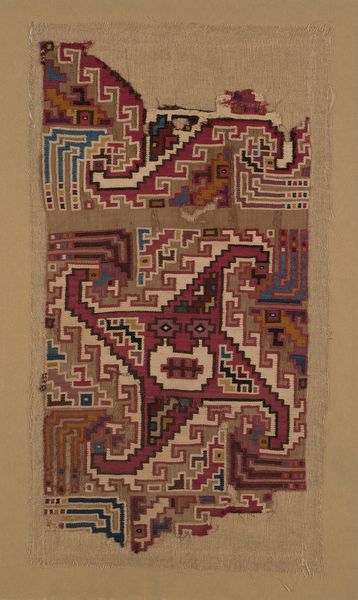
weaving, textile
#
african-art
#
natural stone pattern
#
detailed texture
#
weaving
#
textile
#
subtle pattern
#
carved into stone
#
organic pattern
#
geometric
#
geometric-abstraction
#
repetition of pattern
#
intricate pattern
#
pattern repetition
#
layered pattern
#
organic texture
Dimensions: 197 1/4 x 33 in. (501.02 x 83.82 cm) (irregular)
Copyright: Public Domain
Editor: This is a Kuba textile panel from around the 20th century, housed at the Minneapolis Institute of Art. It’s incredibly detailed, and the geometric patterns create a mesmerizing visual texture. What strikes you most about its composition? Curator: The dominance of abstract geometric forms woven into the textile commands attention. Note how the interplay between figure and ground creates a dynamic surface. The variation in pattern density contributes significantly to the work's aesthetic quality, creating rhythms that pull the eye along the panel. How does this repetition affect your perception? Editor: It makes me think of codes, maybe even early forms of writing. Are the different shapes and lines trying to communicate something, or is it pure decoration? Curator: From a formalist perspective, we can appreciate this Kuba panel's design and composition, looking closely at how elements such as line, shape, and texture are manipulated to produce meaning. While specific symbol interpretation requires broader context, focusing on their relationships—the contrast of textures and scales of the pattern—reveals a sophisticated aesthetic system at play. Do you find a hierarchy in these patterns, or do they seem equally weighted? Editor: I see how some patterns feel more dominant due to their placement. Thank you for helping me focus on the purely visual elements; I was too quick to search for a hidden meaning. Curator: Focusing on purely formal components reveals a sophisticated language of visual structure. It shows us that art holds layers beyond mere symbolism or context, allowing deeper connections.
Comments
No comments
Be the first to comment and join the conversation on the ultimate creative platform.

